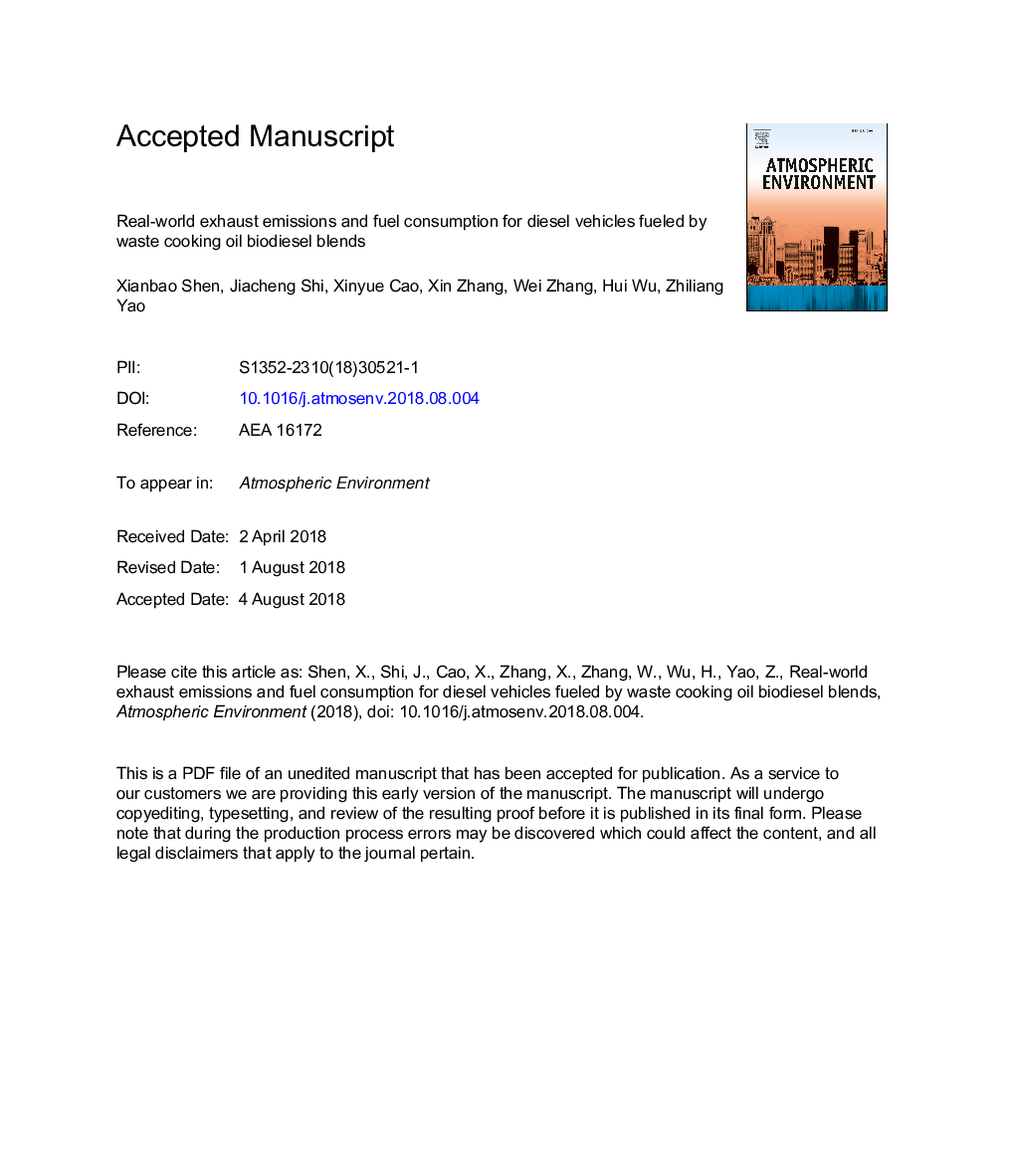| کد مقاله | کد نشریه | سال انتشار | مقاله انگلیسی | نسخه تمام متن |
|---|---|---|---|---|
| 8863403 | 1620283 | 2018 | 33 صفحه PDF | دانلود رایگان |
عنوان انگلیسی مقاله ISI
Real-world exhaust emissions and fuel consumption for diesel vehicles fueled by waste cooking oil biodiesel blends
ترجمه فارسی عنوان
انتشار گازهای گلخانه ای واقعی و مصرف سوخت برای وسایل نقلیه دیزلی که بوسیله زباله های سوخت زیستی تولید می شوند
دانلود مقاله + سفارش ترجمه
دانلود مقاله ISI انگلیسی
رایگان برای ایرانیان
کلمات کلیدی
موضوعات مرتبط
مهندسی و علوم پایه
علوم زمین و سیارات
علم هواشناسی
چکیده انگلیسی
The real-world exhaust emissions and fuel consumption of on-road diesel vehicles, fueled by waste cooking oil biodiesel blends, were measured using a portable emission measurement system (PEMS). Two light-duty diesel trucks (LDDTs) and two heavy-duty diesel trucks (HDDTs) filled with four mixed fuels with blend ratios of 0% (neat diesel), 5% (B5), 20% (B20), and 100% (B100) (biodiesel in traditional fossil diesel) were tested. The results show that the total fuel consumption (biodiesel + traditional fossil diesel) did not clearly decrease, but blending biodiesel into traditional fossil diesel could clearly decreased the consumption of traditional fossil diesel, reduce the countries' dependence on oil imports. Converting waste cooking oil into biofuel and blending with diesel is a three-win alternative, dealing simultaneously with greenhouse gas (GHG) emission, food security, and energy security. The CO, HC, NOX and PM2.5 emissions for all of the tested vehicles decreased with increasing biodiesel content in the blend, with the exception of PM2.5 and NOX for D3, the NOX emissions showed a decrease with increasing biodiesel content in the blend for most vehicles in this study. The effect of emission reduction for all biodiesel blending proportions under highway (HW) condition is better than that under Non-highway (NHW) condition. The degree of reduction in CO, HC, NOX, and PM2.5 emission increased with increasing biodiesel content in the blend under HW section. Under the NHW section, the emission factors for lower biodiesel blend proportions (below 12.5%) especially for B5 were higher than those for neat diesel. The biodiesel blend reduced CO, HC, NOX and PM2.5 emissions compared with neat diesel under different driving modes except for individual condition (especially for B5 under acceleration mode). Increasing the biodiesel content of the blend lowered the CO, HC, NOX, and PM2.5 emissions for acceleration and deceleration modes.
ناشر
Database: Elsevier - ScienceDirect (ساینس دایرکت)
Journal: Atmospheric Environment - Volume 191, October 2018, Pages 249-257
Journal: Atmospheric Environment - Volume 191, October 2018, Pages 249-257
نویسندگان
Xianbao Shen, Jiacheng Shi, Xinyue Cao, Xin Zhang, Wei Zhang, Hui Wu, Zhiliang Yao,
